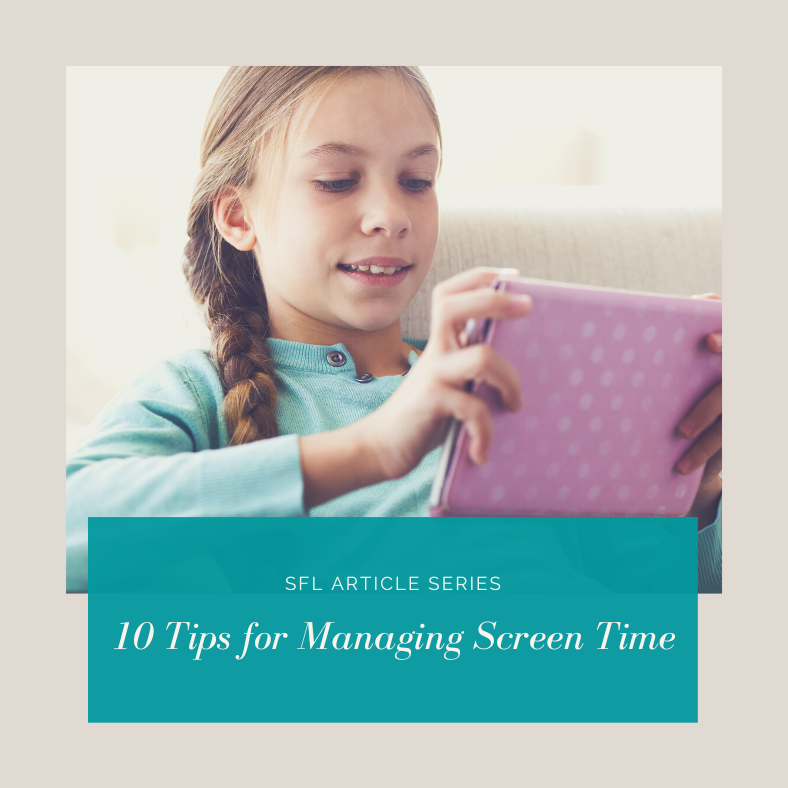No products in the cart.

Written by Amy Soukup, Director of Education
- Schedule decompression time for your child or teen each day. This is a time when technology is fully on limits (within whatever parameters your family has in place). Get your child’s input on when they best like to decompress. Some will need it immediately upon returning home, while others might prefer before or after dinner.
- On the opposite side of the spectrum, schedule technology-free time for your child each day. Ideally this is a time when all members of the family will commit to unplug and engage in tech-free activities (going outdoors, reading, etc). If everyone in the family is participating, your child is less likely to feel like something is being withheld.
- Create at least one “phone-free zone” in the home, such as the dinner table. Again, this will be most powerful and effective if everyone participates, including adults!
- Give 10- and 5-minute warnings when screen time is coming to an end. This allows your child ample time to wrap up a final video, game, or chat with friends. You may need to coach your child on how to wrap up their screen time effectively, until they show signs of being able to do so independently.
- Avoid daily incentivizing or penalizing screen time. This one may be a little more controversial, but researchers have found that using screen time as a reward or punishment has similar effects to doing the same with food. By incentivizing or penalizing screen time, it makes it that much more powerful in your child’s mind, may encourage unhealthy relationships to screens, and lead to increased attempts to negotiate screen time. Try to stay consistent with your child’s screen time schedule, and if at all possible, look for incentives and consequences that fall outside this area and schedule.
- Set up a school-work only device. This will ideally be a piece of technology that has full schoolwork capabilities but also restricts access to anything that can serve as a distraction. Your child’s school may already provide this (e.g. a classroom chromebook or tablet that your child or teen can take home).
- Encourage screen-free bedtime routines. Studies show that screens before bed may make it harder for your child or teen to fall asleep. If your child or teen needs activities to wind down before bedtime, try reading, non-messy art like coloring books, or listening to calming music, podcasts, or audio books.
- Keep it neutral. It’s easy to get anxious after reading studies about the effects of technology on the brain, especially young, developing brains. That said, the more emotionally charged you are when talking with your child about their tech usage, the more emotionally charged they are likely to be in return. For better or worse, tech is here to stay, so treating it like any other daily activity could help take some of the emotion out.
- Stay curious about your child’s virtual world. How does your child like to spend their screen time, and why? What media is your child absorbing? What games are they playing? Who are they talking to and are these friends they know in the 3D world? By holding a curious, open dialogue with your child, you’re most likely to get an honest perspective about what your child is up to and why.
- Remember that not all screen time is considered equal, and there is room for exceptions. For example, watching a family-favorite movie together with shared snacks may be a worthy reason to break away from your family’s typical screen time limits or schedules. Screen time that inspires your child to try a hands-on activity, such as a knitting tutorial or a recipe idea, also may serve as a jumping off point to connect with non-technology based activities. Part of having a healthy relationship with technology is to look for practicing flexibility, within reason.
Additional Resources:







No comment yet, add your voice below!